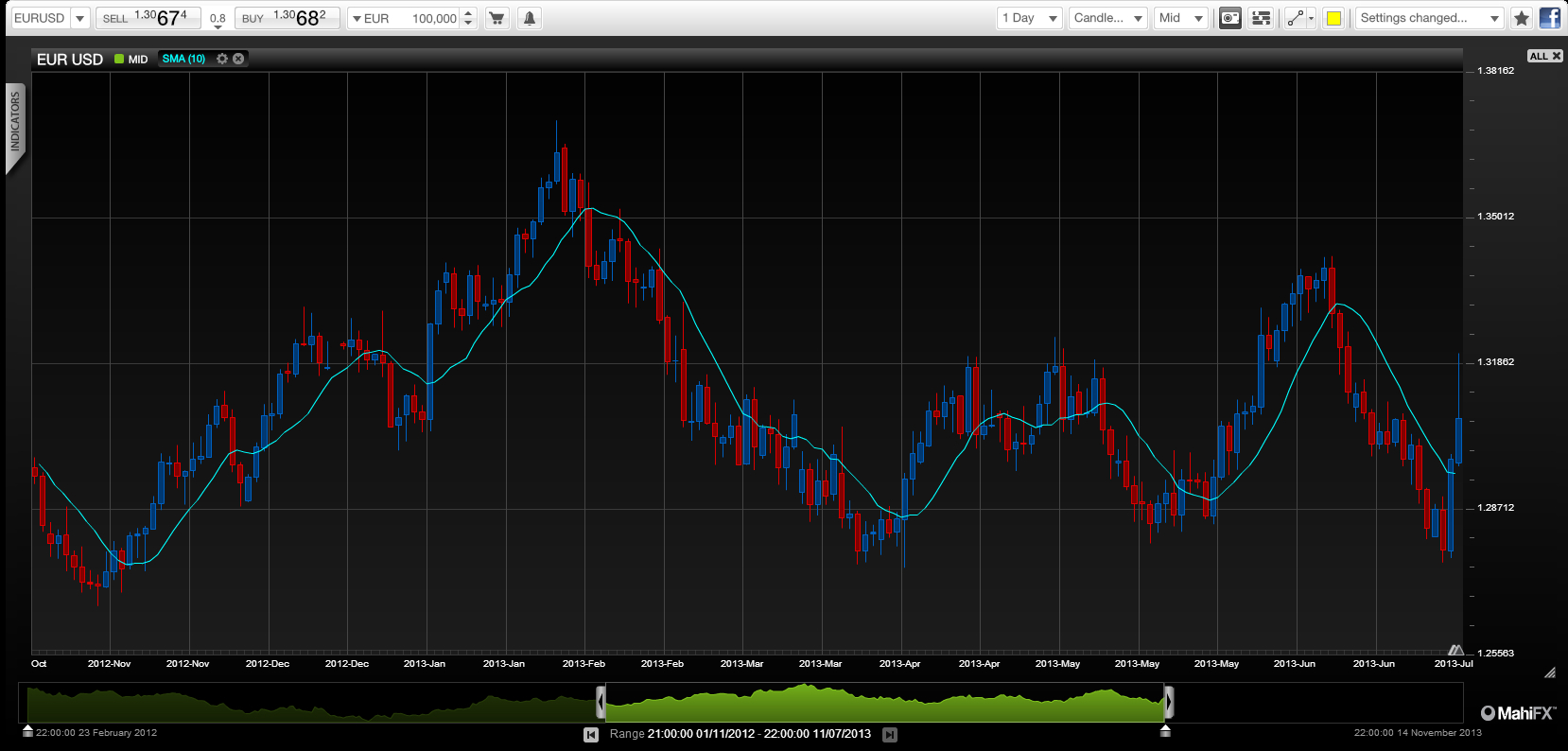Traders expect and welcome volatile forex markets, but not volatile communications from policy makers, though the latter certainly helps create market action. Ben Bernanke, chairman of the US Federal Reserve is quite visibly cooling expectations this week that monetary policy isn’t going to be tightening any time soon. A cue to sell USD?
This is in contrast to the general impression he’s been creating for most of this year, which is that the tapering of the Fed’s quantitative easing programme is due shortly as the economy is recovering. This was rightly taken as a buy signal for the USD and as a hint to bail out of risk currencies and the forex markets duly obliged.
By Justin Pugsley, Markets Analyst MahiFX Follow MahiFX on twitter at: https://twitter.com/MahiFX
Bernanke provided a list of reasons why US monetary policy should remain accommodative and none of them are particularly new: US inflation is around 1% (below Fed’s 2% target), US fiscal policy is “quite restrictive” (citing potential to remove the equivalent of 1.5% from US growth) and unemployment is 7.6% (masks under-employment and well above the Fed’s 6.5% target).
It’s a little like the host was starting to walk out of the room with the punch bowl only to put it back on the table by popular demand from the guests, so the party can go on a little longer than anticipated.
EUR/USD – Probably short-term pull back as Eurozone still far gloomier than US

Fed spooked by real interest rates?
What is very likely to be worrying the Fed is the rise in interest rates for corporate and consumer debt and fears that when combined with cuts in government spending and tax rises will simply snuff out economic growth. Talk of tapering off QE was enough to send the cost of credit to the economy rising suggesting it would increase even more once stopped.
Another issue is that bank balance sheets are stuffed with US Treasuries at the behest of regulators to make them sounder. The withdrawal of QE could see some banks take big paper losses and could respond by restricting lending to businesses and households or at the very least charge higher rates of interest.
It’s very likely the Fed does want to exit unconventional monetary policies such as quantitative easing. It would at least signal an improvement in the economy and there must be concerns it will fuel dangerous speculative bubbles in the financial sector if QE carries on year after year.
The big dilemma for the Fed is how to withdraw QE whilst keeping the cost of credit low for the real economy and not tanking asset markets and reversing the fabled wealth effect. The problem is that QE has so distorted asset markets that its unwinding is bound to create volatility and uncertainty leaving the Fed with a real headache.
For the short-term at least that suggests a USD sell-off, which is happening at least until the next mis-communication from the Fed or a surprisingly strong US economic number emerges.
